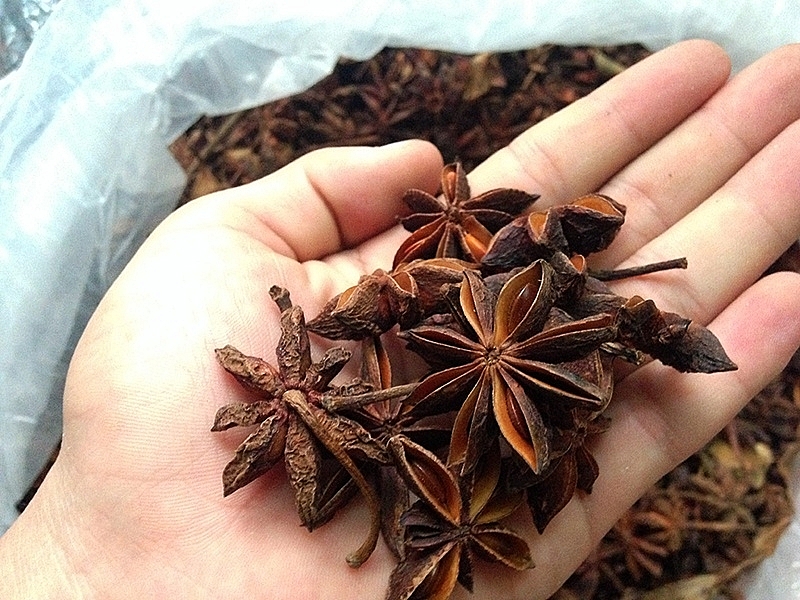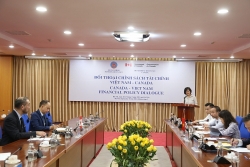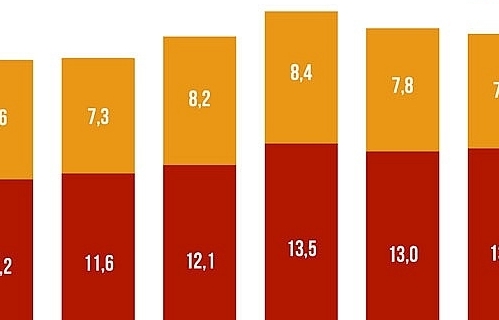Two export products to Canada rose dramatically under CPTPP
| Export products from local resources | |
| Turn pangasius by-products into million USD export products |
 |
| Anise products triples in value at a rate of 226% |
A potential market
The Vietnam Trade Office in Canada said that Vietnam's cinnamon exports to the Canada have increased dramatically under the CPTTP. Before 2018, Vietnam ranked third after Indonesia and the United States in terms of market share, but since 2019, Vietnam ranked first in terms of export value to this market, and has maintained its position till now and accounts for nearly half of the cinnamon market share in the Canadian market. Within five years after implementing CPTPP, Vietnam's cinnamon products have nearly tripled in turnover value at a rate of up to 179%.
The Canadian trade office said that Canada has a need to import about US$20 million for cinnamon products. The Canadian market has a steady increase in consumption of this product, estimated at 22-25 million US$/year from now to 2025.
Vietnam's main competitors are Indonesia, India, the United States, China and Sri Lanka, which export cinnamon sticks or powdered cinnamon products. Meanwhile, the remaining countries such as Thailand, France, Germany, and Turkey often export deeply processed cinnamon products in the form of essential oils and cosmetics.
For anise products, in the first 7 months of 2023, Vietnam exported US$166,000 to Canada, down 8.4% year-on-year. This decrease occurs in the context of the Canadian market's general decline in demand for this product, down 8.4% compared to 2022. Exports of all countries to this market declined except for India, Macedonia and Spain.
Since CPTTP, Vietnam's anise exports to Canada have surged from US$117,000 in 2018 to US$381,000 in 2022. Before 2018, Vietnam ranked 8th, from 2022 Vietnam has risen to 6th place in terms of export value to this country.
According to the Vietnam Trade Office in Canada, although Vietnam's anise product has more than tripled in turnover value at a rate of up to 226%, however, this is a product that still has a lot of room to export. Because every year, Canada has a need to import about US$16 million for this product and it is estimated that Canada may import US$20 million per year from now to 2030.
Currently, Vietnam's main competitors are China, India, the United States, Turkey, and Egypt. The remaining countries such as Italy, Germany, and Spain often export deeply processed anise products in the form of medicines, cosmetics, etc.
For medicinal products, every year, Canada needs to import about 100 million medicinal herbs from other countries. However, Vietnam does not have a remarkable position in the area. The Vietnam's competitors include: China, the United States, India, Mexico, Morocco, Egypt, Turkey, Hong Kong, Taiwan, Colombia... However, every year, Vietnam Nam still exports an average of about US$500,000 of medicinal herbs to this market, reaching a peak of nearly US$700,000 in 2017. For medicinal products, the impact of CPTPP is insignificant.
It is necessary to build geographical indications for Vietnam's Cassia cinnamon
Notably, Vietnamese cinnamon and medicinal products exported to the Canada still enjoy 0% MFN tax even without using the CPTPP form. However, using the CPTPP form is still useful for Canadian importers. Because currently, Canadian manufacturers are also interested in taking advantage of RVC in their input strategies to take advantage of the principle of cumulative origin in production to export to markets where both Canada and Vietnam sign a Free Trade Agreement.
However, after CPTPP, the export of cinnamon products to the market also rose dramatically. This shows that CPTPP has a leverage effect, helping businesses of the two countries pay more attention to the structure of products/their markets, thereby indirectly promoting exports of products without a tax reduction roadmap. Besides, CPTPP also has a positive impact on Vietnamese exports thanks to the spillover effect and the development of supply chains, transportation and logistics between the two countries.
According to the Vietnam Trade Office in Canada, Vietnam has a lot of potential to accelerate the export of cinnamon and medicinal herbs to Canada because of four factors. First, the Canadian market's import demand for these products has rose steadily in the last 10 years (300% in the period 2012-2022). Second, Canada's immigration strategy plans to increase the population to 100 million people, with at least 500,000 immigrants per year, of which about 50% come from Asia who have high demand for cinnamon products. Anise and Asian herbs/spices. Third, due to the cold climate, Canadians are increasingly fond of using cinnamon in cuisine and health care. Fourth, in particular, CPTPP has brought a clear tariff advantage, helping Vietnam surpass competitors such as Indonesia, India and China.
According to the Trade Office, to scale up market share and export turnover value, the Vietnam Cinnamon Association needs to have a strategy to build geographical indications for Vietnam's Cassia cinnamon products to promote and affirm advantages of Vietnamese Cassia cinnamon compared to South Asian Ceylon cinnamon.
 | Vietnam - Canada promote financial policy dialogue mechanism |
In addition, businesses need to coordinate with other industries to increase the value of deep processing and bring new products to the market, such as cinnamon flower honey mixed with cinnamon powder, scented candles with cinnamon essential oil, cinnamon-scented bath oil, cinnamon-scented green tea... For anise products, currently, Vietnam mainly exported raw, unpackaged, unbranded products, so the identification of Vietnamese products in Canada is not high.
Related News

Promoting agricultural exports to the Japanese market
13:55 | 22/12/2024 Import-Export

An Giang Customs issues many notes to help businesses improve compliance
09:29 | 20/12/2024 Customs
Latest News

VN faced with increasing trade defence investigations on rising protectionism
18:58 | 22/12/2024 Import-Export

Việt Nam expects to officially export passion fruit to the US next year
18:55 | 22/12/2024 Import-Export

UK’s carbon tax to affect VN exports
18:51 | 22/12/2024 Import-Export

Removing obstacles in granting certificates of exploited aquatic products
13:56 | 22/12/2024 Import-Export
More News

Agricultural exports in 2024 to exceed 60 billion USD?
13:53 | 22/12/2024 Import-Export

Seafood exports expected to exceed $10 billion in 2025: expert
20:28 | 21/12/2024 Import-Export

Top 10 Reputable Animal Feed Companies in 2024: Efforts to survive the challenges of nature
18:30 | 21/12/2024 Import-Export

Vietnam's import-export surges 15.3%
09:44 | 20/12/2024 Import-Export

More Vietnamese firms interested in Saudi Arabia: Ambassador
09:43 | 20/12/2024 Import-Export

“Give and Take” in the Value Chain of the CPTPP Market
09:30 | 20/12/2024 Import-Export

Binh Dinh province works to attract investment from Japan
15:44 | 19/12/2024 Import-Export

Agricultural, forestry and fishery exports “reach the target” early
15:20 | 19/12/2024 Import-Export

Thailand remains Vietnam’s biggest trading partner in ASEAN
15:35 | 18/12/2024 Import-Export
Your care

VN faced with increasing trade defence investigations on rising protectionism
18:58 | 22/12/2024 Import-Export

Việt Nam expects to officially export passion fruit to the US next year
18:55 | 22/12/2024 Import-Export

UK’s carbon tax to affect VN exports
18:51 | 22/12/2024 Import-Export

Removing obstacles in granting certificates of exploited aquatic products
13:56 | 22/12/2024 Import-Export

Promoting agricultural exports to the Japanese market
13:55 | 22/12/2024 Import-Export





